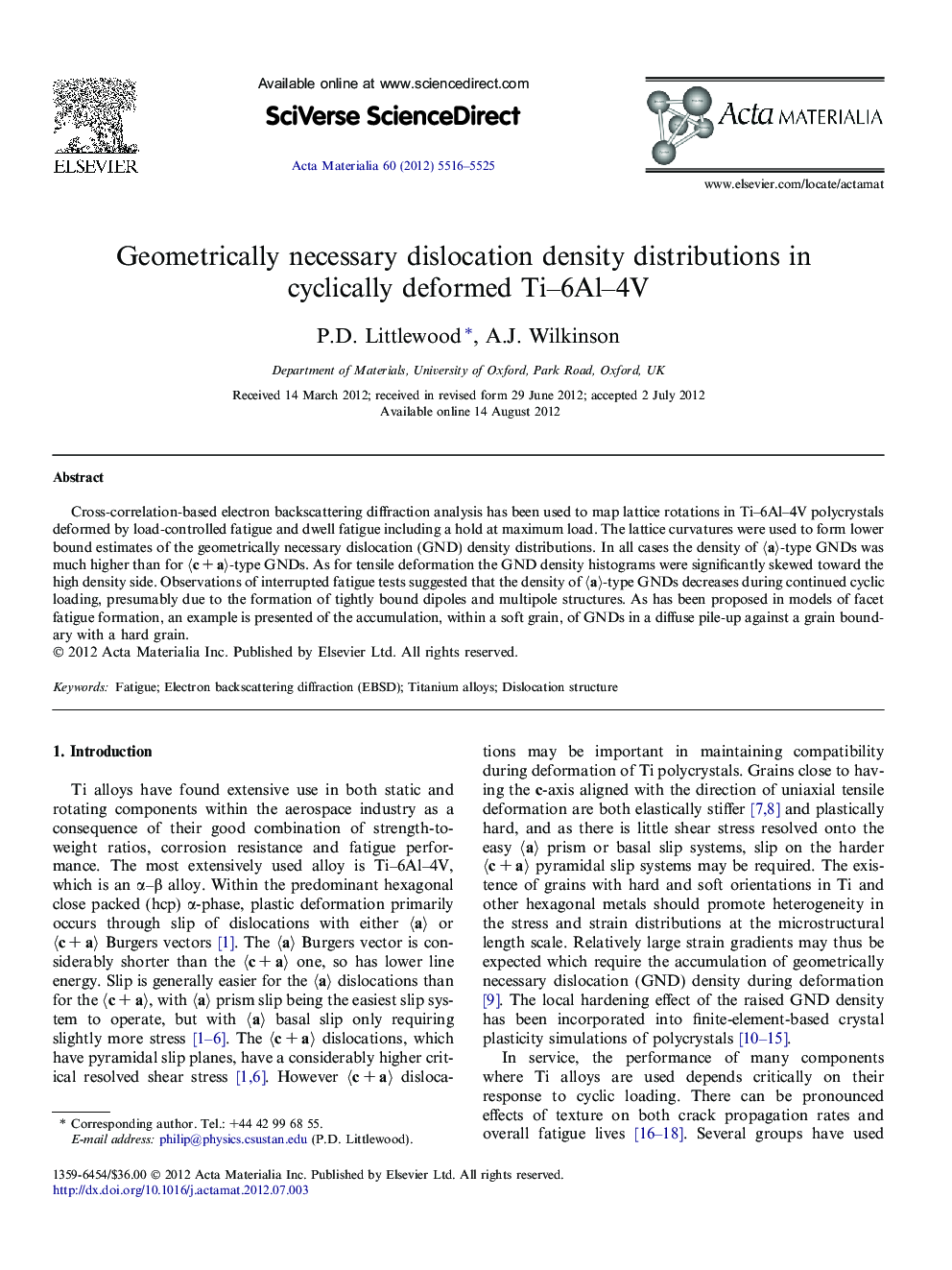| Article ID | Journal | Published Year | Pages | File Type |
|---|---|---|---|---|
| 10620396 | Acta Materialia | 2012 | 10 Pages |
Abstract
Cross-correlation-based electron backscattering diffraction analysis has been used to map lattice rotations in Ti-6Al-4V polycrystals deformed by load-controlled fatigue and dwell fatigue including a hold at maximum load. The lattice curvatures were used to form lower bound estimates of the geometrically necessary dislocation (GND) density distributions. In all cases the density of ãaã-type GNDs was much higher than for ãc + aã-type GNDs. As for tensile deformation the GND density histograms were significantly skewed toward the high density side. Observations of interrupted fatigue tests suggested that the density of ãaã-type GNDs decreases during continued cyclic loading, presumably due to the formation of tightly bound dipoles and multipole structures. As has been proposed in models of facet fatigue formation, an example is presented of the accumulation, within a soft grain, of GNDs in a diffuse pile-up against a grain boundary with a hard grain.
Related Topics
Physical Sciences and Engineering
Materials Science
Ceramics and Composites
Authors
P.D. Littlewood, A.J. Wilkinson,
